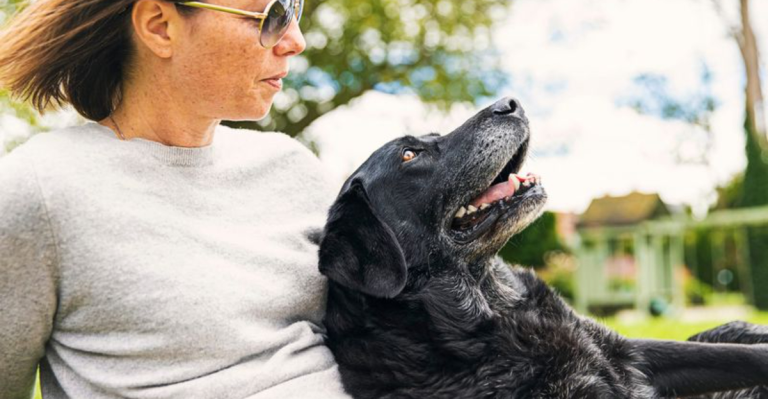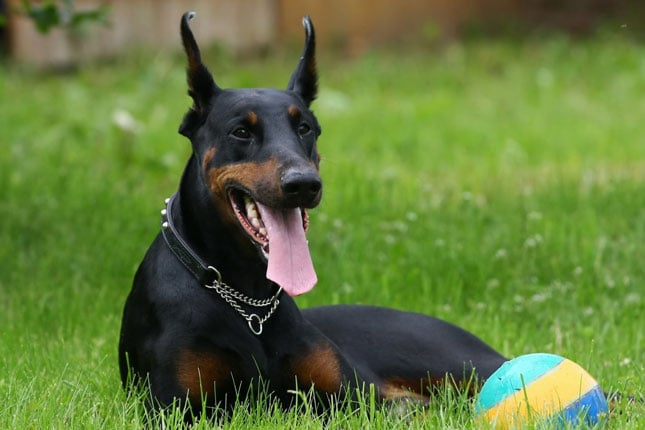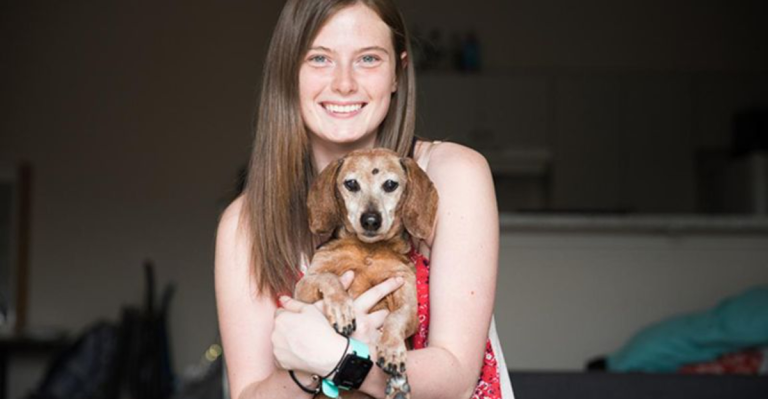8 Signs Your Dog Wants More Exercise (And 8 That Mean You’re Tiring Them Out)
Finding the right balance of exercise for your dog can feel like trying to hit a moving target.
One day, they’re sprinting circles around your coffee table like they’re training for the canine Olympics. The next, they’re dragging their paws halfway through the walk and collapsing like a drama queen on your welcome mat. Sound familiar?
Just like humans, dogs have individual energy levels, preferences, and limits—and those can shift with age, breed, weather, or even mood.
Some pups thrive on daily hikes and backyard fetch marathons. Others are perfectly content with a stroll around the block and a cozy nap by your feet.
But no matter what kind of dog you have, one thing’s for sure: too little activity can lead to pent-up frustration, behavioral issues, and poor health. On the flip side, too much exercise can stress their joints, cause fatigue, and even lead to injury.
So, how do you know when your dog needs more action—and when it’s time to pump the brakes? That’s where this guide comes in.
We’re breaking down 8 signs that your pup is begging for more exercise—and 8 warning signals that you might be overdoing it. Because staying active should be fun and healthy, not exhausting or overwhelming.
Whether you’ve got a high-octane herding breed or a couch-loving companion, learning to read your dog’s signals can make all the difference in their physical and emotional well-being.
Let’s decode the clues together—your dog will thank you (probably with a tail wag and a happy snooze).
1. Destructive Behavior at Home
If your dog has taken a sudden interest in chewing your favorite shoes or shredding pillows, they may be acting out of boredom. Destructive behavior is often a dog’s way of telling you they need more stimulation—both physical and mental.
When dogs aren’t given an outlet to burn energy, they’ll create one. That might mean tearing through the trash or gnawing on the leg of your coffee table. It’s not personal—they’re just looking for something to do.
2. Excessive Barking or Whining
When your dog starts vocalizing more than usual, it might not be because they saw a squirrel. Barking, whining, or howling without an apparent trigger can be a sign of pent-up energy and frustration.
Think of it as their version of yelling, “I’m bored!” If your dog barks at everything that moves or whines constantly for attention, it may be time to lengthen your walks or introduce more play.
3. Weight Gain or Sluggish Metabolism
Even with a well-balanced diet, your dog can gain weight if they aren’t moving enough. A few skipped walks or shortened play sessions can slowly lead to extra pounds and a sluggish metabolism.
Over time, this lack of movement affects their health, mood, and even lifespan. Regular, appropriate exercise helps keep your dog trim, energetic, and feeling their best—from tail to toe.
4. Constant Pacing or Restlessness
If your dog seems like they just can’t sit still, it could be more than personality—it might be restlessness caused by inactivity. Pacing around the house, hopping on and off furniture, or switching positions frequently are telltale signs.
A well-exercised dog tends to settle more easily. When your pup’s constantly on the move, they’re likely searching for an outlet. Spoiler alert: a longer walk or some backyard zoomies might do the trick.
5. Jumping on People or Furniture
When your dog launches onto you or your couch like a rocket, it could be more than excitement—it might be excess energy bubbling over. Dogs that don’t get enough exercise often act out physically in exaggerated ways.
This isn’t just about training or discipline. It’s about unmet needs. If your dog is constantly jumping up, tackling guests, or bouncing off the walls, they’re probably begging for more playtime or movement.
6. Overenthusiasm During Walks
Does your dog treat every walk like they just won the lottery? Sprinting out the door, dragging you down the block, and acting like they haven’t been outside in a year? That’s a big clue they’re under-exercised.
While excitement is great, extreme behavior at the sight of a leash often means they’re craving more regular activity. A well-exercised dog is still thrilled for walks—but in a more balanced, less frenzied way.
7. Stealing or Hoarding Items
If your dog has suddenly turned into a sock bandit or toy hoarder, they might be desperate for stimulation. Dogs that lack physical and mental outlets often turn to mischief to create their own fun.
Whether it’s snatching your remote or hiding your shoes, this behavior is usually rooted in boredom. A tired dog is a good dog—so make sure your pup gets plenty of action before you blame their “naughty” side.
8. Poor Sleep Patterns
Dogs that don’t get enough exercise may struggle to settle down and sleep. If your pup is pacing at night, waking up frequently, or just seems restless in general, they might be under-stimulated during the day.
Physical activity helps regulate a dog’s internal rhythms just like it does for humans. When they’re tired in a healthy way, they sleep deeper and more peacefully—making life easier for both of you.
But while not getting enough activity can cause problems, giving your dog too much exercise can be just as harmful—here are the signs you’re pushing them past their limit.
9. Limping or Sore Muscles After Activity
If your dog is limping or moving stiffly after exercise, it’s a red flag. This can indicate overworked muscles or even a minor injury that needs rest. Dogs aren’t always great at telling us when they’re hurting—so subtle signs matter.
Especially in senior dogs or certain breeds prone to joint issues, too much activity can lead to long-term damage. Watch for soreness the next morning—it’s often more telling than what happens right after playtime.
10. Reluctance to Go for Walks
When your dog, who usually bolts to the door at the jingle of a leash, suddenly hesitates or turns away, take note. Reluctance to walk can mean they’re tired, sore, or just plain burnt out.
While dogs love routine, they also need recovery time. If they’re dragging their feet or planting their paws in protest, don’t force it. Skipping a walk here and there can actually be beneficial if their body needs it.
11. Excessive Panting or Drooling
Panting is a natural way for dogs to cool down—but excessive panting long after exercise ends can signal overheating or exhaustion. Similarly, heavy drooling may suggest physical stress, especially in warm weather.
If your pup is panting with their tongue hanging low and doesn’t seem to recover quickly, ease up on the intensity of activity. Rest, shade, and water are essential tools for a safe recovery.
12. Sudden Changes in Behavior
Is your normally affectionate dog acting irritable or withdrawn? Behavioral changes can stem from physical fatigue, pain, or mental stress due to overexertion. A tired brain is just as vulnerable as a tired body.
If they’re suddenly snappy, anxious, or unusually quiet after lots of activity, don’t brush it off. It might be their way of saying, “I’ve had enough.” Giving them space and recovery time is key.
13. Sleeping Excessively
Dogs love to nap, sure—but too much sleep, especially after moderate activity, can be a sign you’re pushing them too far. If they spend most of the day passed out and seem groggy when awake, it’s time to reassess.
Quality sleep after play is normal. But a dog that’s constantly wiped out may not be getting the right type—or right amount—of exercise for their age, breed, and energy level.
14. Loss of Appetite
A dog skipping meals is always worth noticing. While many things can affect appetite, overexercising is one overlooked cause. Too much physical strain can put the body into recovery mode, temporarily decreasing hunger.
If your dog was happily devouring dinner yesterday but shows disinterest after a big day out, it might be more than a coincidence. Give them rest, hydration, and a lighter day before worrying about long-term feeding issues.
15. Pad Injuries or Cracked Paws
Rough surfaces, excessive running, or long walks can wear down your dog’s paw pads. If you notice cracks, redness, or limping, they may be overworked. This is especially common in hot weather or on pavement.
Pads don’t have shoes, after all. And once damaged, they take time to heal. If your dog seems uncomfortable walking or starts licking their paws obsessively, check for wear—and adjust your outings accordingly.
16. Stiffness When Getting Up
If your dog hesitates to rise after resting or moves with stiffness, it may be a delayed reaction to too much exercise. Like us after leg day, dogs can feel the strain a day or two later.
This is particularly important to watch in older dogs or large breeds prone to joint issues. They may still want to play, but their bodies need rest. Recognizing this helps prevent long-term mobility problems.





















